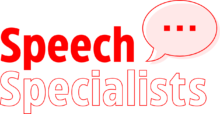AAC
About
What is AAC?
AAC stands for Augmentative and Alternative Communication. This can include a large variety of things, from the most basic like sign language, visual boards, writing even gestures; to the most integrated technology like speech generative devices controlled by eye gaze or switches.
Who can AAC help?
AAC can help all different types of children and adults. Whether it is used as an aid while developing verbal language or it becomes the primary source of communication for a person who can’t utilize verbal output, AAC can be adapted to all. Not every tool works for every person so it is important to find the right one for you or your loved one.


Is my child the right age and or have the right skills?
Some people wonder if children need to be a certain age before they can use AAC, but rest assured you can implement AAC as early as 3 years of age! There are no thinking skills, milestones or test score that you need to reach before AAC can help.
Will my child or loved one lose motivation to use verbal speech?
A lot of people wonder if AAC will stop someone from talking or will slow down their language and speech development. This is not true! AAC can actually help with these concerns. Whether you have a child who is developing language or a loved one who has had a stroke and is working on getting that language back, AAC can support that growth. People who use AAC can also learn how to read and write.
Here at Speech Specialists we have a large knowledge base of low tech to high tech AAC options. We are proficient with multiple devices and are always expanding our knowledge as technology changes and grows.
Areas of Intervention
Some current tech competencies we have include the following:
- Tobii Dynavox devices
- Liberator devices
- Eye gaze access
- IPad with communication software
- Big Mack
- Go Talk
Some current software competencies we have include the following:
- Compass
- TD Snap
- Nova Chat
- Communicator 5
